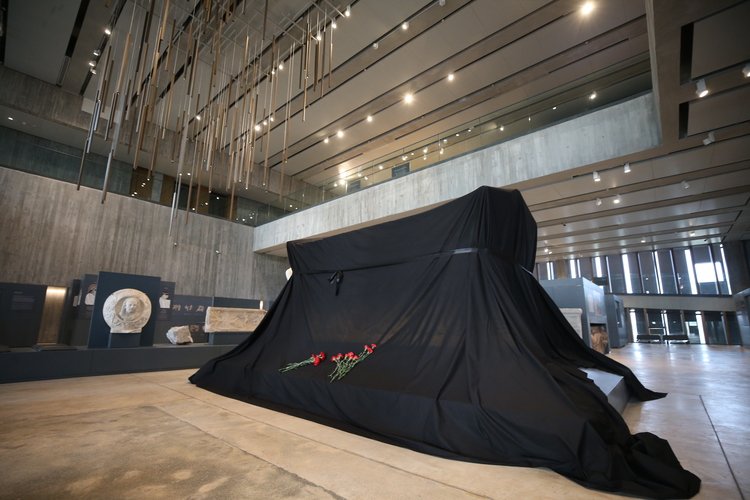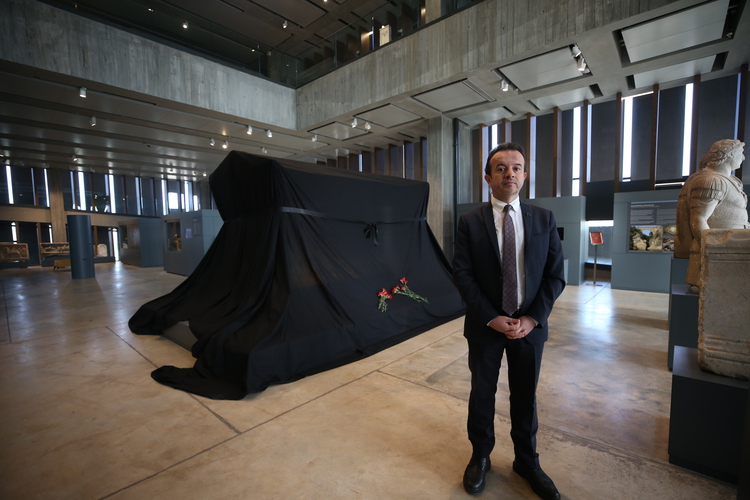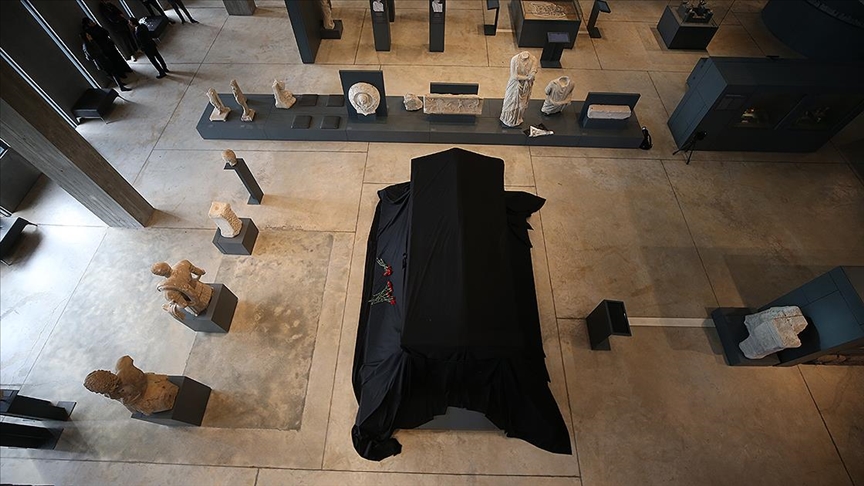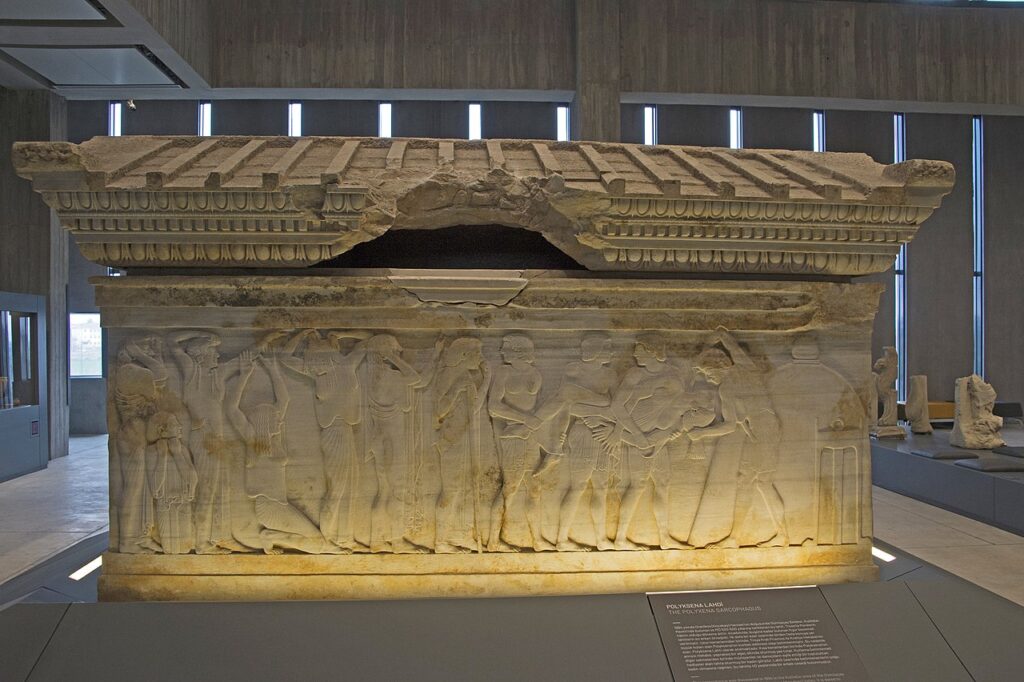
The Polyksena Sarcophagus was covered with a black cloth on the “International Day for the Elimination of Violence Against Women.”
The Polyksena sarcophagus, located at the Troy Museum at the entrance of Tevfikiye village, connected to Çanakkale, was covered with a black cloth in observance of the “International Day for the Elimination of Violence Against Women” on November 25. This approximately 2,600-year-old sarcophagus depicts the sacrifice of Polyksena, the youngest daughter of King Priam and Queen Hecuba of Troy.
To draw attention to the “International Day for the Elimination of Violence Against Women,” the museum’s female staff adorned the covered sarcophagus with black ribbons and placed carnations at its base.

Rıdvan Gölcük, the director of the Troy Museum, reminded the press that the United Nations first declared November 25 as an international day to raise awareness about violence against women. He emphasized the historical roots of violence against women, noting that such themes can be found in the Trojan epic and related narratives. One example is the sacrifice of Iphigenia, the daughter of the Achaean commander Agamemnon, and the scene of the sacrifice of Polyksena, which is depicted on the 2,500-year-old sarcophagus behind him.
Gölcük pointed out that in the context of Anatolia, women were the primary producers in Troy, particularly in the textile industry, which was the largest export item produced entirely by women. He mentioned that Pentesilea was one of the prominent women fighting for Troy in the epic. He also highlighted that Azra Erat’s translations of the Iliad and the Odyssey are significant, as they represent the first translations of the Iliad by a woman, showcasing the value and productivity of women in Anatolia.
📣 Our WhatsApp channel is now LIVE! Stay up-to-date with the latest news and updates, just click here to follow us on WhatsApp and never miss a thing!!

Gölcük stated that by covering the sarcophagus depicting the sacrifice of Polyksena with a black cloth for about an hour, they aimed to block, prevent, and not display the violence represented. He concluded by affirming that women are valuable and precious simply because they are human, and they want to emphasize this value and importance from their position.
The Polyksena Sarcophagus, which depicts the painful yet honorable death of Polyksena.
The Sarcophagus of Polyxena, one of the oldest examples of figured sarcophagi found in Anatolia, was found in the Kızöldün Tumulus in Çanakkale. A marble sarcophagus dating to 520-500 BC is named after Polyksena, one of the legendary heroines of the Trojan War, depicted in the reliefs on the sarcophagus.

According to the legend, the Greeks who won the Trojan War demanded that the Trojan king Priamos sacrifice his daughter Polyksena as part of the peace treaty. Her painful yet honorable death is one of the most tragic scenes in this mythological story. The reliefs on the sarcophagus depict exactly this scene.
The Sarcophagus of Polyxena is made of marble from Prokonnesos (Marmara Island). It is 3.32 meters long, 1.60 meters wide and 1.78 meters high.
The four sides of the sarcophagus are decorated with reliefs. The most striking one is the scene of the sacrifice of Polyxena on one of the long sides. Other reliefs depict various mythological figures and scenes of daily life.
You may also like
- A 1700-year-old statue of Pan unearthed during the excavations at Polyeuktos in İstanbul
- The granary was found in the ancient city of Sebaste, founded by the first Roman emperor Augustus
- Donalar Kale Kapı Rock Tomb or Donalar Rock Tomb
- Theater emerges as works continue in ancient city of Perinthos
- Urartian King Argishti’s bronze shield revealed the name of an unknown country
- The religious center of Lycia, the ancient city of Letoon
- Who were the Luwians?
- A new study brings a fresh perspective on the Anatolian origin of the Indo-European languages
- Perhaps the oldest thermal treatment center in the world, which has been in continuous use for 2000 years -Basilica Therma Roman Bath or King’s Daughter-
- The largest synagogue of the ancient world, located in the ancient city of Sardis, is being restored











Leave a Reply